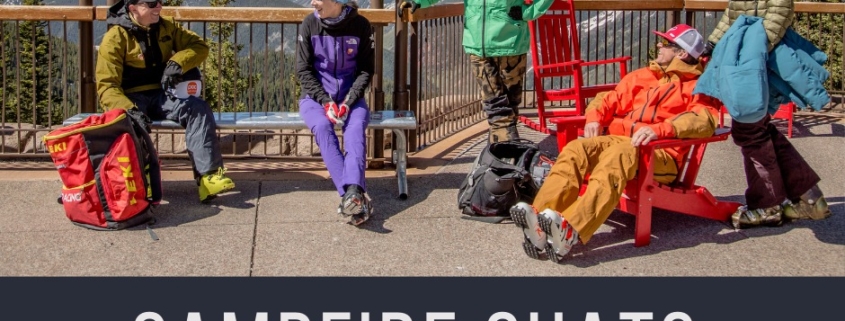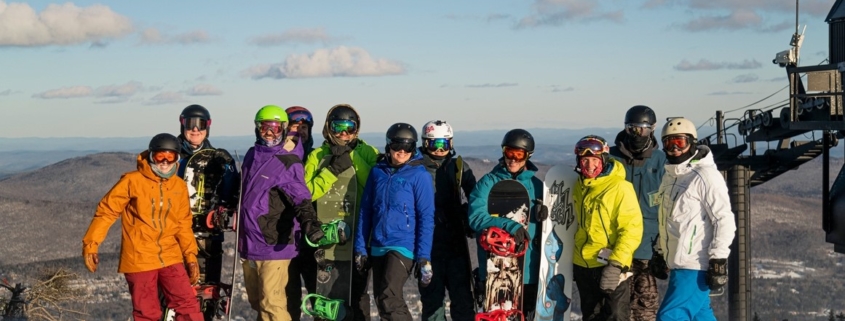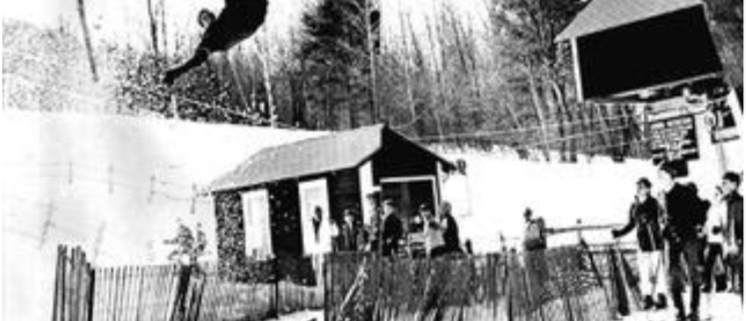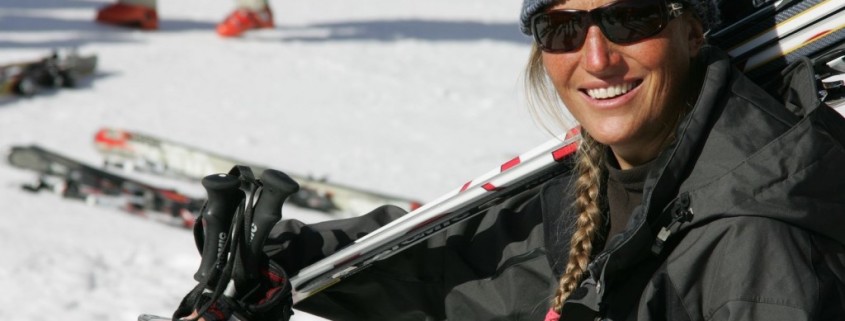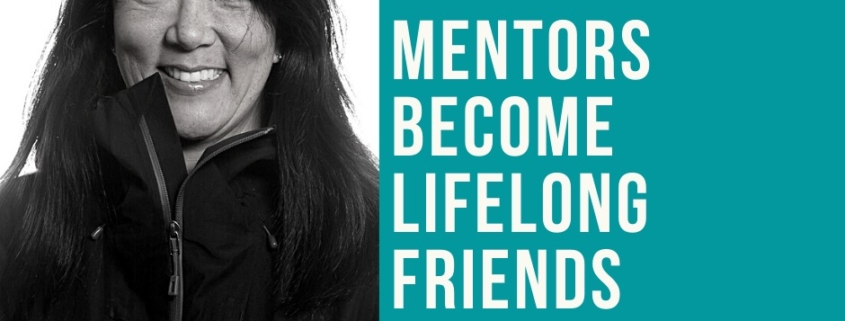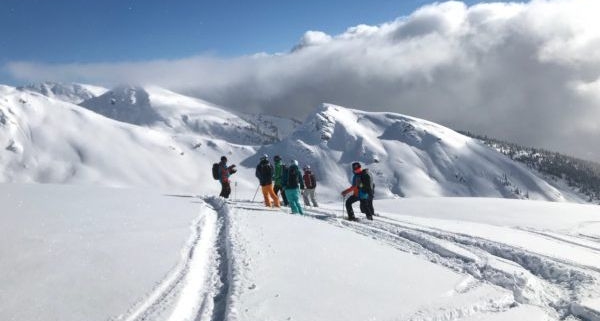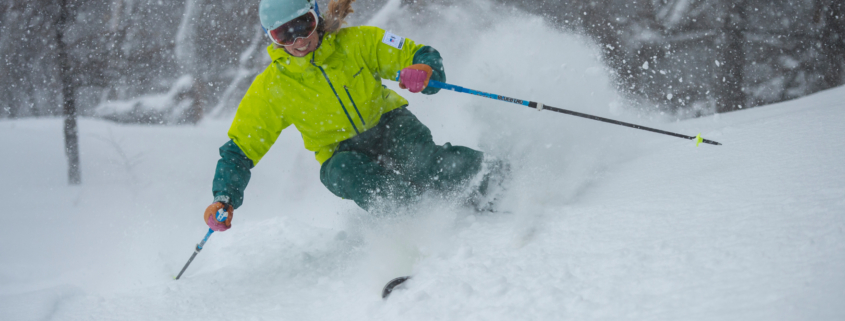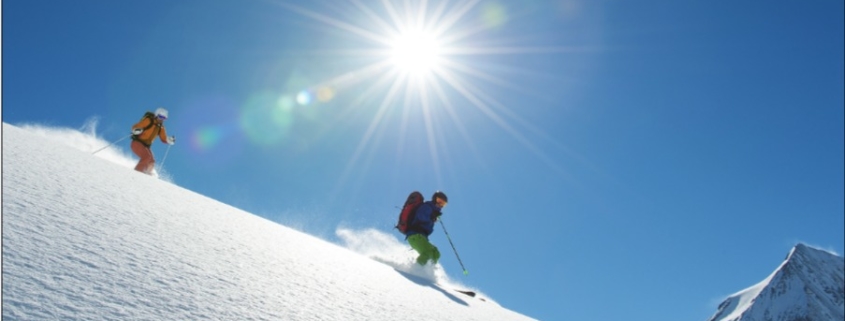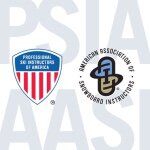December Edge Newsletter
/in Adaptive, Alpine, Children's, Ed Fund, Edge, Featured, Freestyle, News, Nordic, Seniors, Snowboard /by Kristi JHappy Holidays from the Ed Foundation
/in Adaptive, Alpine, Children's, Ed Fund, Featured, Freestyle, News, Nordic, Seniors, Snowboard /by Kristi JFaces of PSIA-AASI W
/in Adaptive, Alpine, Children's, Ed Fund, Featured, Freestyle, News, Nordic, Seniors, Snowboard /by Kristi JNovember Edge Newsletter
/in Adaptive, Alpine, Children's, Ed Fund, Edge, Featured, Freestyle, News, Nordic, Seniors, Snowboard /by Kristi JWestern Alpine Movement Analysis Training Tool
/in Alpine, Featured, News /by Kristi JThis program was developed to focus on Movement Analysis (MA). It is specifically designed to address Movement Analysis Exam Criteria for the PSIA-AASI Western Division Alpine Discipline.
This MA Program addresses how students move. It talks about how to identify cause-and-effect relationships between a student’s movements and the action of their skis as well as prescription for change, and the effect that equipment may have on performance.
However, please remember that this is but one element of snowsports instruction. To teach a complete lesson, an instructor should not just focus on MA, but also assess all aspects of a student from learning styles, emotional and physical states, confidence levels, and their engagement with the lesson and the instructor. When used together, the instructor can formulate a lesson plan that is customized to their students for a purposeful, meaningful and personal exploration of skiing.
MOVEMENT ANALYSIS:
The National Standards for PSIA regarding Movement Analysis have three common assessment activities when looking to assess competency for PSIA Certification Levels 1-3:
- Observe: articulate (describe) accurate ski and body performances through at least one phase of the turn
- Evaluate: articulate accurate cause and effect relationships using one or more skiing fundamental
- Prescribe: create a pathway for improvement using one or more skiing fundamental
All 3 Cert levels use the following assessment criteria in graduated complexity:
- Accurately describe performances using the 5 fundamentals
- Link ski and body performances to describe cause and effect relationships
- Evaluate performance (real) against a more ideal model
- Prescribe a specific change to one or more fundamental using DIRT
- Relate how equipment choice affects skiing outcome
When developing a process to meet the criteria, the Alpine Technical Manual sites all systems should have three elements in common: observation, evaluation, and prescription. The observer should consider the following:
Observe: what, when and how does it happen?
- Turn shape and size. Skis relationship (parallel, converging etc.), symmetry from one turn to the next, is speed consistent?
- Whole vs Part: do you focus on the skier’s whole image? Or is the focus on a specific body part or specific phase of turn?
- What part(s) of the turn: initiation, shaping or finish
- Ski: Does it slip or grip, where is the spray? Do the skis move in a simultaneous way? What tracks are left on the snow?
- Body: Pressure fore or aft? Ski to ski pressure? How are joints flexed?
- DIRT: Where is the direction of the movements?
Evaluate: why is it happening?
- Cause and effect relationships; the body (cause) makes the ski do (effect)
- Focus on the cause
- Real vs Ideal: compare the skier’s performance to the desired outcome
- Prioritize what change (fundamental) will have the greatest impact.
Prescribe: prescription for changing the students’ performance.
- State an outcome using the fundamental focus prioritized in the evaluation phase
- Understand and describe how cause and effect links to stated outcome
- Create learning opportunities (progression, drill, or exercise) that are specific to stated outcome
- Understand the difference between instruction and feedback
- Give feedback that is clearly tied to the observation, evaluation and relevant to the stated outcome
DEFINITIONS:
The following descriptions and definitions will help with a common language for MA.
Ski Performance: includes the skis action, location (phase of the turn), relationship of the skis to each other and will include equipment variations
Body Performance: includes Rotational Control mechanics, Edge Control movements, Pressure Control movements, the location of said movements and the DIRT of the movements
Cause and Effect Relationships: “the body moves this way, and causes the ski to do this..” Evaluation of the cause or origin of an action, and its resulting effect or result. The observer must consider the intent of the skier, including his/her understanding. Equipment and mechanics are related factors.
Real vs Ideal: the instructor compares the students’ performance (real) to an optimal performance (ideal) for a given task, condition, intent, or mechanic.
DIRT: an acronym standing for Duration, Intensity, Rate and Timing. These are terms that attach value, and therefore description, to movements being observed.
Duration: Length of time the movement exists
Intensity: Power given to the movement. Amount, magnitude, or quantity.
Rate: The speed in which a movement occurs.
Timing: When the movement occurs. Could be in relation to another event.
Also, the direction of the movement relative to the slope should be considered.
Turn Size: short, medium, or long. Turn size is often defined by a corridor of a certain measurement. The skis side cut may be a factor.
Turn Shape: what path the ski takes. Often in conjunction with looking whether the skier is using braking or shaping to control speed. Common descriptions include C, J or Z shaped turns.
Drill: a task or exercise used to enforce a desired performance or retain knowledge
Exercise: situations and tasks to help break down and isolate certain movements and skills for development. Often combined into a progression.
Progression: a sequence of acts, movements, or events that increase in difficulty and are designed to meet a goal or outcome.
Instruction: prescriptive language that is directed towards improvement on agreed goal or outcome.
Feedback: clear information given to help clarify if a desired result was achieved
Understanding the Body Performance and Ski Performance as they relate to the fundamentals:
Note: While it is important to make improvements or refine an individual skill/fundamental, it is critical to effectively blend these together for various tasks, conditions, steepness etc. For example, short radius vs long radius turns, powder vs hard packed, groomed vs un-groomed and flatter vs steeper terrain.
National Ski Areas Association (NSAA) Operational Best Practices
/in Featured, News /by Kristi JAn NSAA advisory group of ski industry leaders developed this website resource, and the Ski Well, Be Well operational best practices based on scientific guidelines from experts. These practices can be adapted to each ski area’s unique operation and can be scaled according to the appropriate local COVID-19 response.
SkiWellBeWell_2020
National Awards
/in Ed Fund, Featured, News /by Kristi JBy Blaine Lomen
PSIA-AASI W Board of Directors
Twice a year, PSIA-AASI gives awards in three categories. The three awards below are considered the Winter Awards with an application deadline date of December 31, 2020. The Spring Awards have an application deadline of April 30, 2021. We will send out an email the beginning of 2021 similar to this for those awards.
The awards have specific descriptions of what the recipient has accomplished and / or contributed to the organization. In addition, each award indicates who is eligible, who can nominate a candidate and has a link to the specific award applications. For more information click on The Snowpros link below.
https://www.thesnowpros.org/who-we-are/awards-recognition
The PSIA-AASI considers all applications though does not give out these awards lightly. The PSIA-AASI Western Board of Directors encourages all members to give serious consideration to either applying for themselves or someone else, who meets the standards set below. The honor bestowed upon the recipients of these awards is highly regarded and coveted. Not unlike Academy Award nominees, just to be considered for one of these awards is an honor unto itself! Thank you for helping the Western Division find and nominate worthy candidates for these prestigious awards.
Distinguished Service Award
This award recognizes those who have made important contributions that have added to the success of PSIA-AASI. These candidates have displayed long-term commitment and dedication by providing educational programming support, or by contributing to group and/or PSIA-AASI National Team efforts that involve important national initiatives. Other examples of distinguished service may include demonstrating positive leadership skills, fostering connections with and between members, or having a willingness to mentor peers – both young and experienced. Members and non-members, including staff, vendors and industry partners, are eligible to receive this award.
Past recipients: https://www.thesnowpros.org/download/Distinguished-Service.pdf
Who is eligible? Members, and non-members, including PSIA-AASI staff, vendors and industry partners
Who can nominate a candidate? PSIA-AASI Board of Directors, Committees, Divisional Boards, or PSIA-AASI members in good standing (all continuing education requirements have been met and dues have been paid)
Application Deadline: Nominations are due by December 31.
Application: https://form.jotform.com/82554653442156
Educational Excellence Award
This award recognizes those exceptional few members who authored PSIA-AASI educational materials over the years. They have added significantly to, and possibly even changed, the educational direction of PSIA-AASI. They have exhibited dedication, devotion and self-sacrifice contributing to the PSIA-AASI educational system, with ten years or more sustained outstanding service.
Past recipients: https://www.thesnowpros.org/download/Educational-Excellence.pdf
Who is eligible? Members that significantly contribute to the creation of PSIA-AASI education materials (with 10 years or more of service)
Who can nominate? PSIA-AASI Board of Directors, Committees, Divisional Boards, or PSIA-AASI members in good standing (all continuing education requirements have been met and dues have been paid)
Application Deadline: Nominations are due by December 31.
Application: https://form.jotform.com/82554270942156
Lifetime Achievement Award
This award recognizes exceptional members who have designed and implemented programs, projects and procedures affecting the association on a national level. They have exhibited dedication, devotion, and self-sacrifice serving in national level leadership positions.
Past recipients: https://www.thesnowpros.org/download/Lifetime-Achievement.pdf
Who is eligible? Members with 10 years or more sustained outstanding service
Who can nominate? PSIA-AASI Board of Directors, Committees, Divisional Boards, or PSIA-AASI members in good standing (all continuing education requirements have been met and dues have been paid)
Application Deadline: Nominations are due by December 31.
Application: https://form.jotform.com/82554468142157
CONTACT US
Serving California, Nevada, and Hawaii
Mailing Address:
P.O. Box 969
Truckee, CA 96160
Member Services
(303) 987-9390
memberservices@thesnowpros.org

